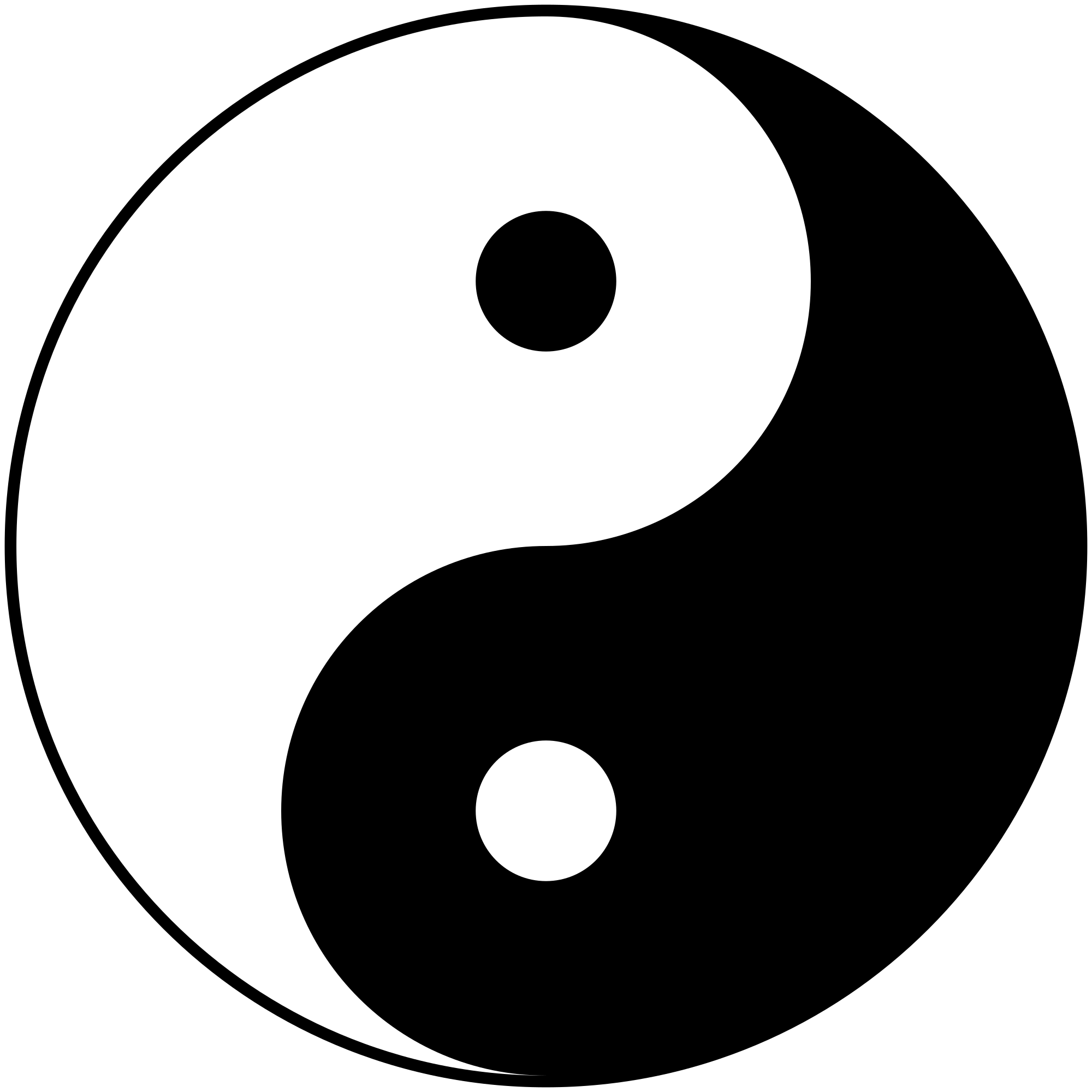 Your utlimate
Your utlimate
Fengshui calculator
Online Help
Login first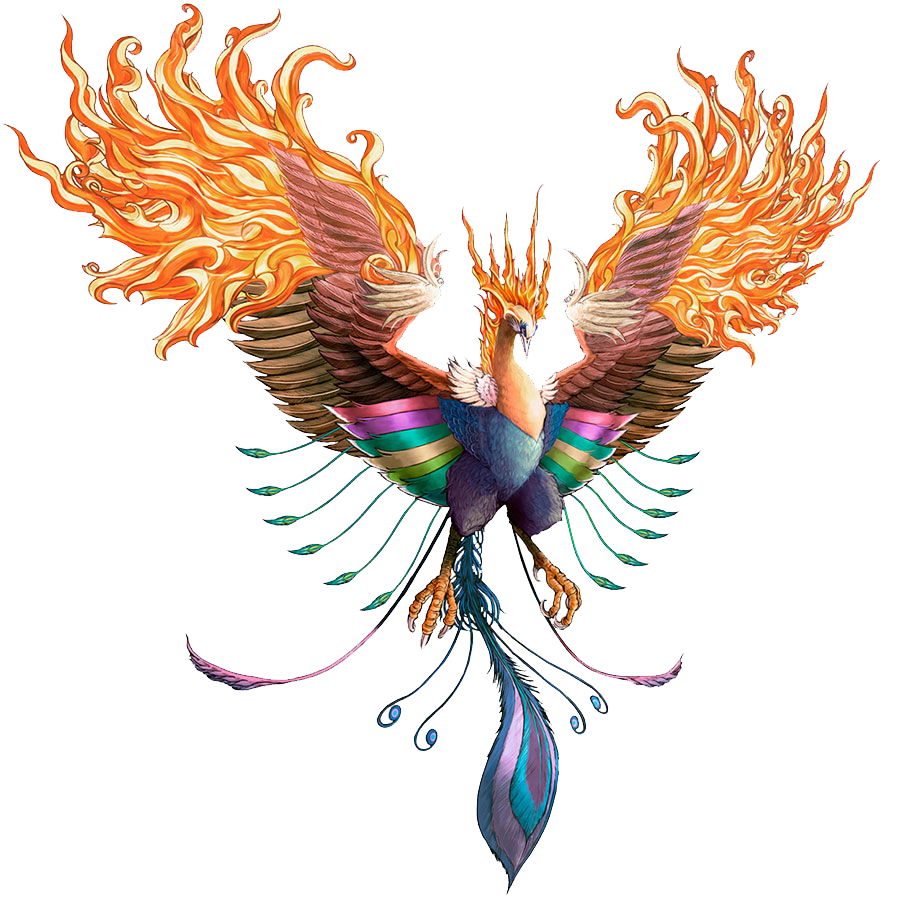
The tool can only be accessed by users with valid credentials.
If you already have a username and password, please insert them on the left side of the screen (see picture below), and click on the "Login" button.
If your credentials are correct, a message "Login successful" will appear below the button. Otherwise,
a red error message will be displayed inviting you to fix the problem and try again.
If the problem persists, please send me an email at: Your Fengshui Partner.

After you have successfully logged in, a new button "Change password" will appear below the "Login" button,
allowing you to change your password whenever you want.
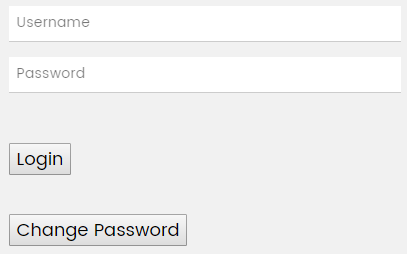
If you ckick the "Change Password" button, a new section will appear as below. Insert you exsisting passord
in the first field, then the new password in the two following fields, and confirm by pushing the "Submit" button.
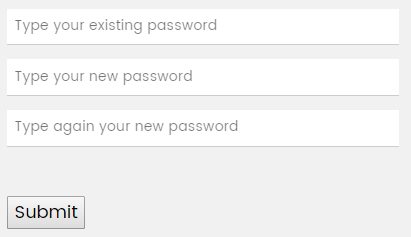
Now you can navigate to any section of the menu on the left of the screen (see picture below).
If you are a new user, we advise you to go through the sections one by one from the top, starting with "Personal Bagua", then "Personal Goals", etc.
For more explanations on any specific section, please scroll down this help section, or click on the "Help" button from the desired section.

Please note that any personal information/parameter that you will record in this tool can only be visible by yourself, no other user can access them,
unless they use your personal credentials to login to the system.
Personal Bagua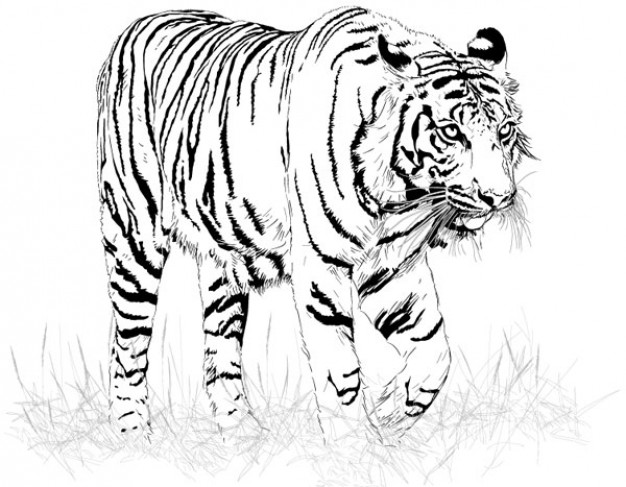
As Fengshui tips and advice will have to be personalized and adapted to each individual person,
it is important to insert the personal details of any member of your family or relatives
on whom you plan to focus (starting by yourself of course).
On the left side, you can insert the details of any "new" person: name, date of birth and gender.
Once you are ready, click the "Submit" button at the bottom.
Please note that the "Date of birth" input field
may not accept specific formats depending on your browser.
The ususally accepted format is "MM/DD/YYYY" (Google Chrome), but sometimes it may work better with "YYYY/MM/DD" (Firefox and IE).
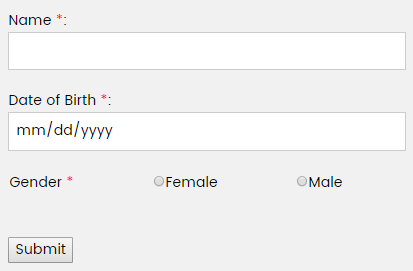
After you click on the "Submit" button, the Bagua (or Pakua) number and the corresponding Fengshui element
of the person will be displayed on the right side.
The Bagua Number, between 1 and 9, is the number which will allow to identify the areas of your home
which can bring the most luck to the selected person, the rooms in which he or she is most (or least) in harmony.
This fundamental parameter will be used later in the "Property Bagua" section to help determine
the "lucky" areas of each person in any specific property.
When a person is already registered, you can select him or her using the "select" drop-down list, and decide to either:
- display the details (Bagua number, element, typical personality traits) of the selected person, using the "Show" button;
- or delete all the records associated to that person, using the "Delete" button.
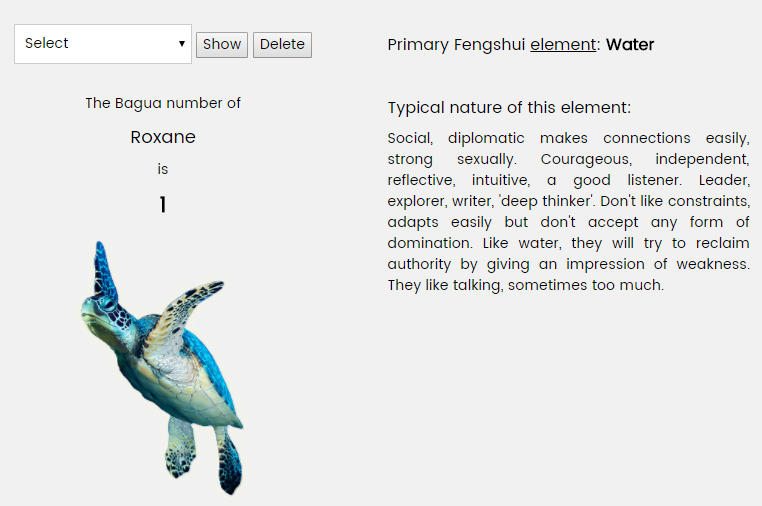
When you scroll down, you will discover the personalized Bagua maps of the selected person.
Using the right-click button of your mouse, you can download those half-transparent maps onto your computer.
Then you can position them on the floor plan of the targeted property in order to identify which room(s) corresponds to which Gua(s),
see the Bagua help section for more details.
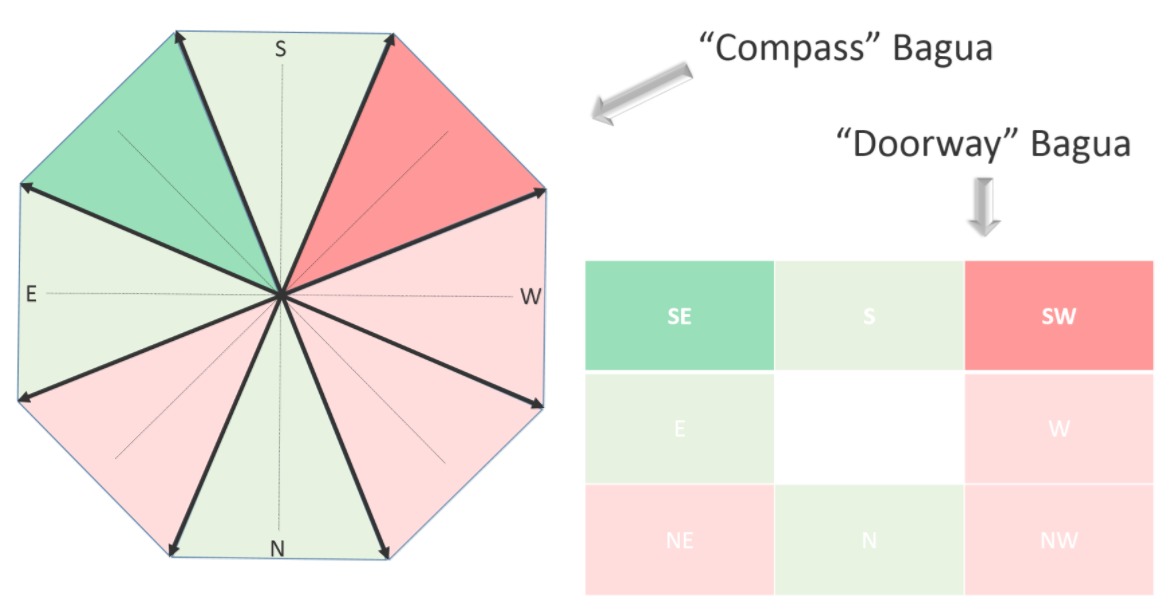
If you scroll further down, you will discover the personalized good or bad directions for the selected person, depending on his/her group (East or West).
The good sitting or sleeping directions are marked in green, the bad ones are marked in red.
You should typically use them to adjust the position of your bed and desk according to one of your best directions.
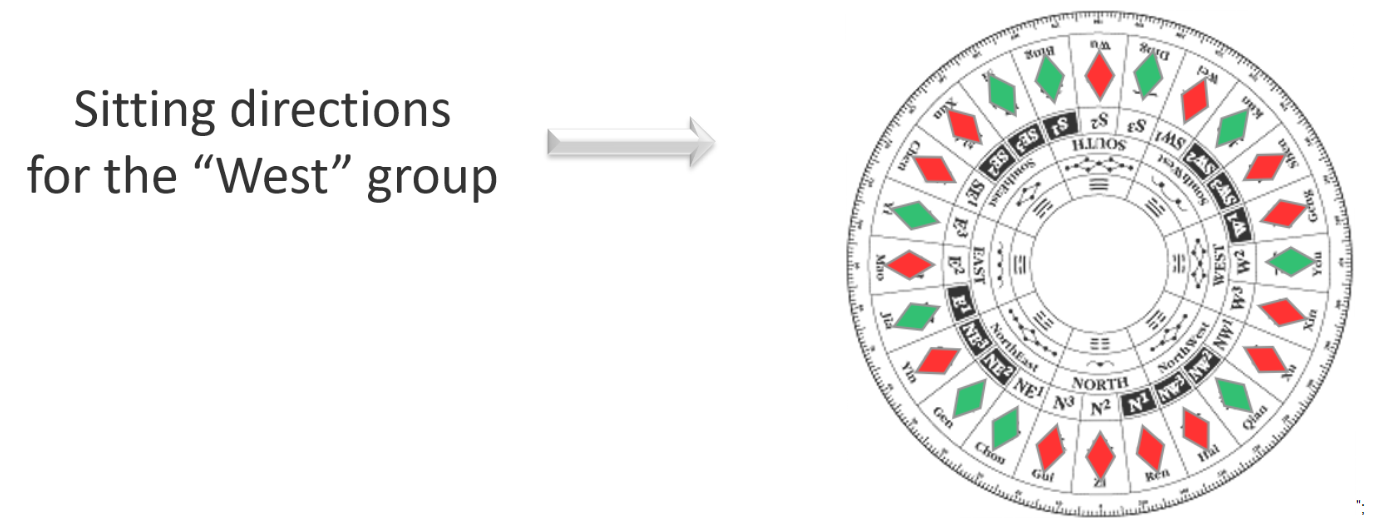
As always, if you encounter any technical problem or if you have any question, please don't hesitate to send an email to: Your Fengshui Partner.
Personal Goals
The purpose of the "Personal Goals" section is to register the professional and/or personal objectives of each individual person.
This will allow to identify the areas of your home which should be prioritized for improvement initiatives, in relation to the specific person.
Information will be used in the "Property Bagua" section to help determine
the "focus" areas of each person in any specific property.
On the left side, you should first select the person for whom you will later define the personal objectives.
If you were already working on a specific person, he or she should be pre-selected already, displaying the personal parameters.
If there is no "selectable" person in the drop-down list, it means you should first register a Person in the "Personal Bagua" section.
Once a person is selected, his or her details will be displayed as in the picture below.
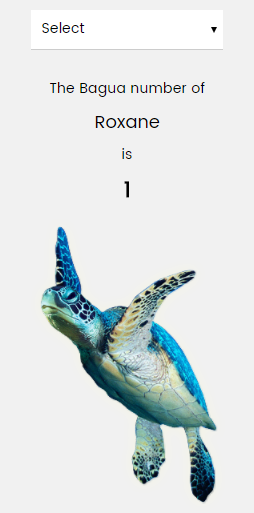
Then you can move to the right side to select the main activity or job for the selected person. It will then display the focus area(s) for
improving your luck in the selected activity/job. For example, if "(NE) Knowledge" is displayed, it means that
improving the Fengshui of the North-East area of the property will bring luck in the selected activity/job for the selected person.
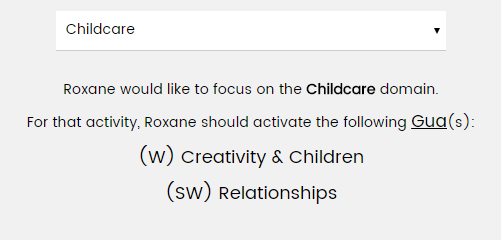
Then you can move down to the next topic, to select up to 3 middle-term objectives for the selected person. In fact, it is not mandatory
to select any objectives, or you can select only one or two. But the more you can define, the more accurately we can determine
the focus area(s) for the given person. As usual, Don't forget to click on the "Select Middle Term Objectives" button
in order to confirm the selection. It will then display the focus area(s) for improving the chances to reach the selected middle-term objectives.
For example, if "(NE) Knowledge" is displayed, it means that improving the Fengshui of the North-East area of the property
will increase the chances to reach the selected objectives for the selected person.
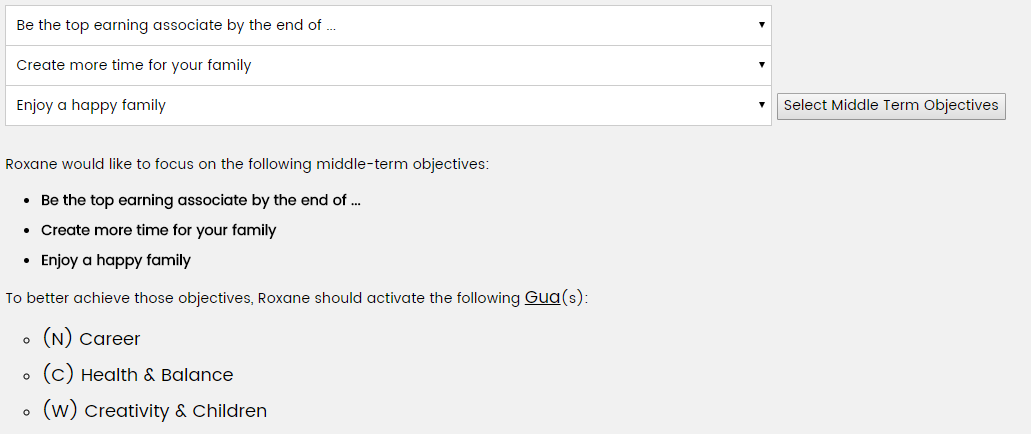
The same logic applies to the following sub-section, focusing on the short-term objectives of the same person.
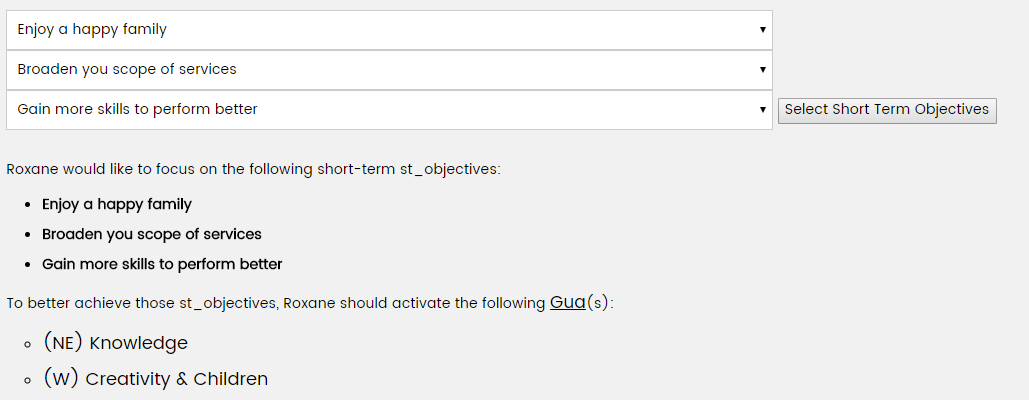
Then, the last sub-section called "focus directions" will automatically display the focus area(s) based on all the selected parameters
(activity, middle-term objectives and short-term objectives). Yellow color means that the area is associated to only one of the selected parameters.
Orange color means that the area is associated to two of those selected parameters, and red color is when three (or more) of the parameters are associated to
the highlighted area.

As always, if you encounter any technical problem or if you have any question, please don't hesitate to send an email to: Your Fengshui Partner.
Property Bagua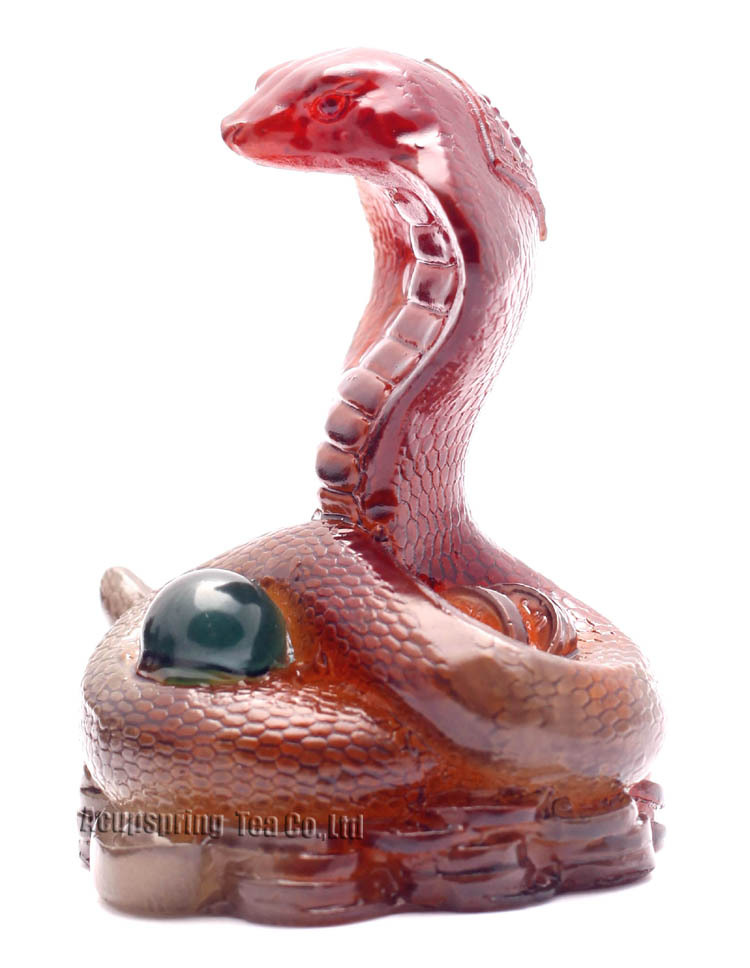
The "Property Bagua" section has 2 main objectives:
- associate each room/area in the property to a correponding sector using either the "Doorway Bagua" method,
or the "Compass Bagua" method, or both of them combined;
- then identify the areas of focus and display/study the corresponding improvement tips.
1. Create or Select a property: On the left side, you can type the name of the new property to register it, then the year you moved in,
and the facing direction of the property based on the 24 Moutains (you can use your compass or traditional Luo Pan to take the facing direction, but you may also
try to find the property on Google Maps, as I found the directions quite accurate there).
then click on the "Submit" button to confirm.
Note that 'Moving Year' and 'Facing Direction' are necessary only for the Flying Stars traditional technique.
On the right side, you can select any property you have already registered.
If there is no "selectable" property in the drop-down list, it means you should first register a property on the left side.

Once a properly is created or selected, you can move down to the next block to select a specific person.
2. Select a specific person: On the left side, the selected property should be already displayed. If this is not the case,
you should move up to the previous block in order to first create or select a property.
On the right side, you can select any person you have already registered.
If there is no "selectable" person in the drop-down list, it means you should first register a person in the "Personal Bagua" section
(click on "Personal Bagua" in the menu bar).

Once the person is selected, you can move to the next block to define/assign the property areas.
3. Define the Gua(s) of each room: this block will only display if you have selected a property and a person in the previous block.
It will show again the Doorway and Compass Bagua maps of the selected person,
along with his or her focus areas in line with the activity and objectives provided in the "Personal Goals" section for that person.
You can then position those Bagua maps on the floor plan of the selected property. This will allow you to determine which Bagua sector
corresponds to each room in that property.
In case the 'Moving Year' and 'Facing Direction' were selected for the given property, the Flying Star map is also displayed in this section.
The Period corresponds to the 'Moving Year' (for example 'Period 8', which started in 2004 and will end in 2024), and the selected 'Facing Direction' is highlighted in yellow on the map.
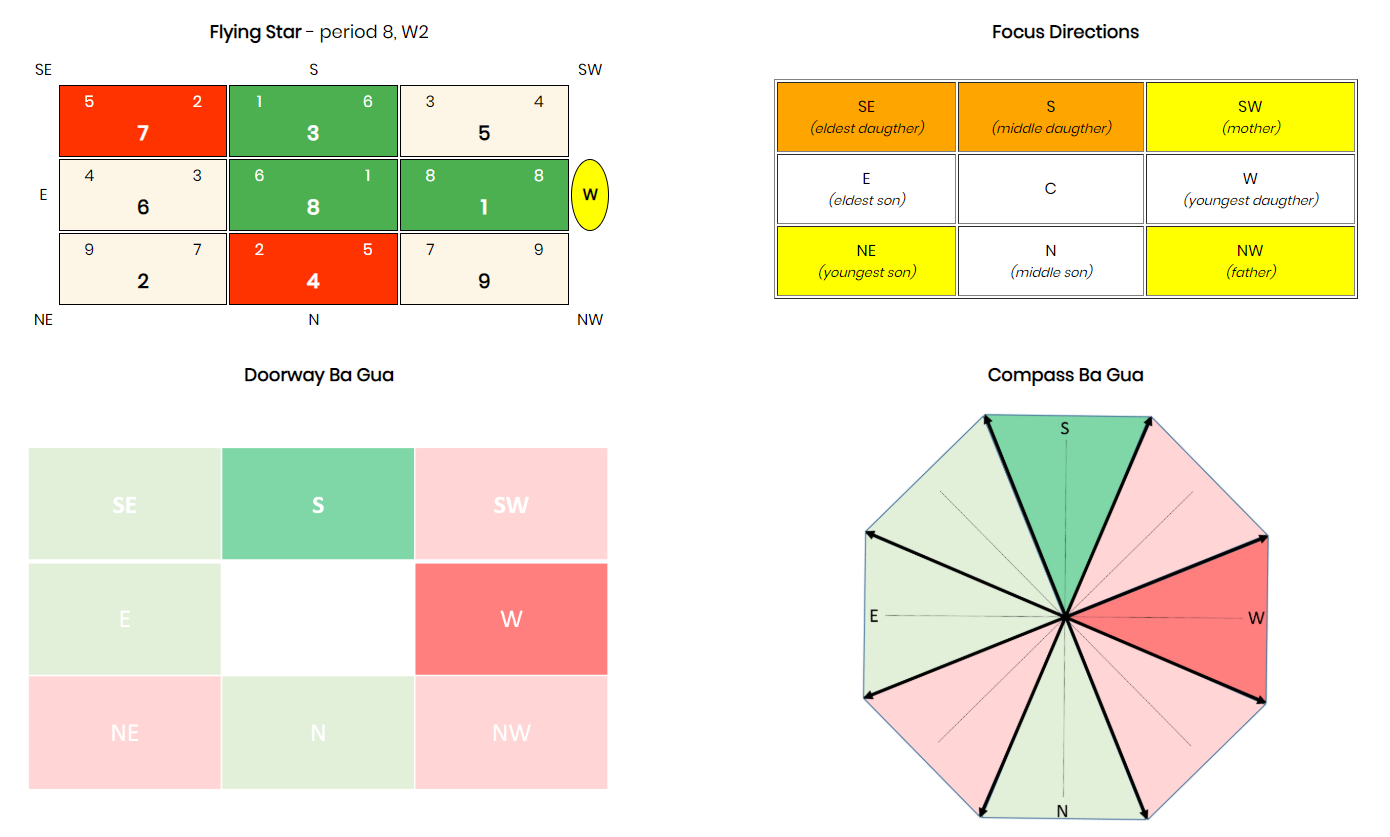
Then on the left side, you can define a name for each room/area, and assign an "area type". For example, you can define a room
named "the kids' bedroom", and area type would be "bedroom".
in the center, please assign the sector corresponding to that room on the Doorway Bagua map. It will display below
the Fengshui name of this sector, and whether it is a focus and/or a lucky area for the selected person.
On the right side, you can assign the sector corresponding to that room on the Compass Bagua map.
Finally, when you are happy with your selection, you can click on the big button "Click here to validate this entry".
This will register the full association, and the system will automatically display the new record in the next block.

4. List of areas/Guas for the selected property and person: the block displays a table with all the areas you have already registered for the selected property.
It will not display if no area has been assigned yet.
For each area/room, you can either:
- "Edit": it will display the information previously registered for the selected area, so you can modify the associated sectors if needed.
Don't forget to validate the whole entry in order to formally update the record.
- "Delete": it will delete the information related to the selected area/room.
- "Tips": it will display the tips to improve the Fengshui in the selected area, see next block "List the tips to activate the selected area/room".
No need to improve the Fengshui of each room, you should use the focus/lucky/Flying Stars indications to prioritize the areas. For example, you should start
with the areas with "high focus" and "bad" or "very bad" luck, as improving those areas will be crucial for the selected person.

5. List the tips to activate the selected area/room: in case you have pushed the "Tips" button for one of the area/room,
this block will display a table with all the tips and advice to improve the Fengshui in that specific area.
the tips are roughly ordered based on their relavance and priority, but you can also use the filters at the top of the table:
- Gua: you can decide to focus only on the "Doorway" Bagua, or the "Compass" Bagua, or combine both.
- Tip type: you can decide to improve the "Chi" of the area in general, or to select the right "colors",
or to focus on "object" placement, even for specific objects like "furniture", "natural objects", or "electronics".
- Do - Don't: you can specify if you want to be advised what to do, or what not to do.
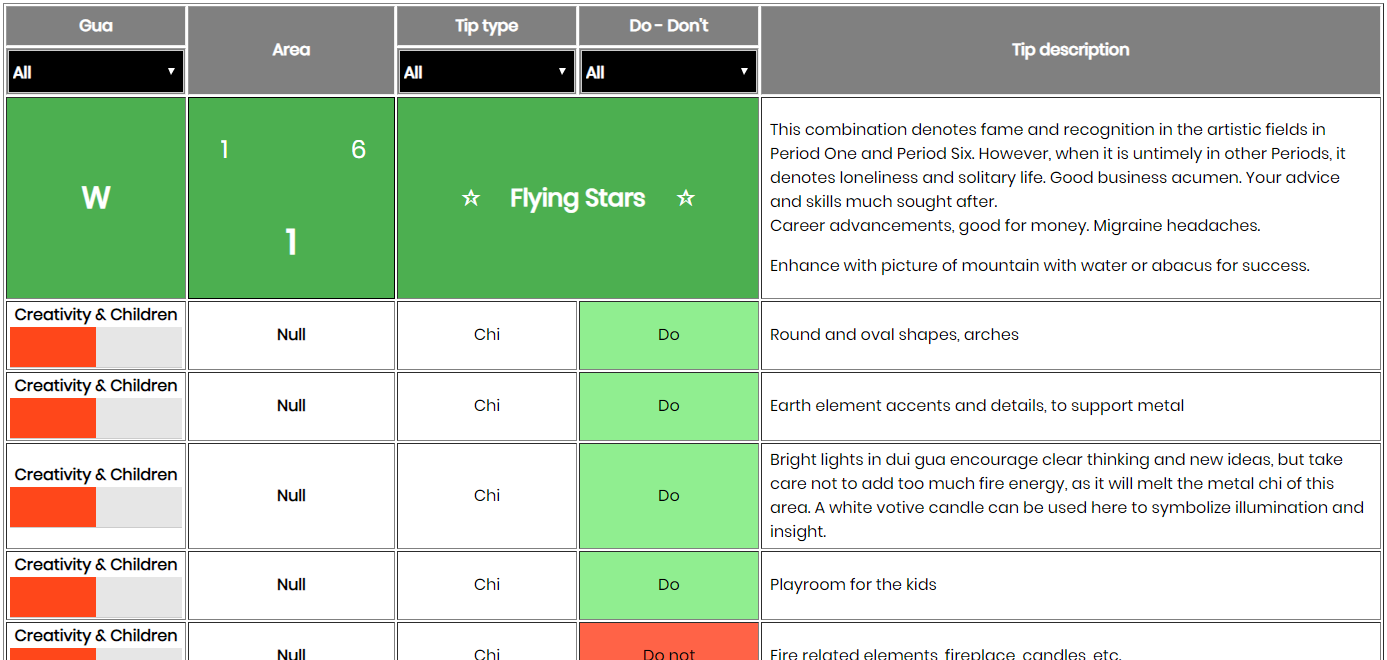
6. Analyze the 3 afflictions: in order to complement the Flying Star analysis for the selected Period (of 20 years),
you should also look at the specific 'afflictions' for any given year. Those 'Yearly Affliction' stars have specific names in Fengshui: in Period 8, the 'Grand Duke Jupiter' corresponds to star 2,
the 'Five Yellow' to start 5 and the '3 Killings' to star 3. Those stars change position every year and their negative influence can be significant, so it is worth
having a look and apply the suggested advice to counter their effect as much as possible.
Just select the year of analysis, and the system will automatically display, for each affliction:
- The affected direction or sector
- The mostly affected animals/signs (you can check the animal/sign of the selected person on the right)
- The usual cure to avoid the negative influence during the selected year

As always, if you encounter any technical problem or if you have any question, please don't hesitate to send an email to: Your Fengshui Partner.
Check object energy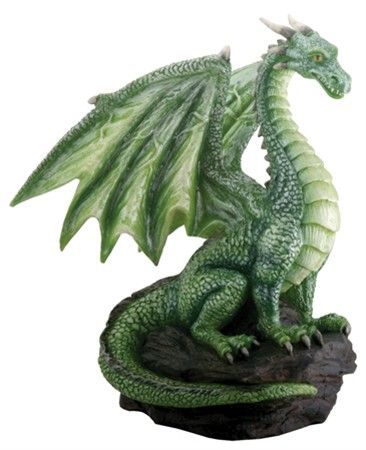
In the "Check object" section, you will be able to analyze the "Fengshui polarity" of any object, e.g. the proportion
of Wood, Fire, Earth, Metal and/or Water energy radiated by the given object. Please always bear in mind that:
- this unique calculation method can never be 100% accurate,
but will give you an interesting analytical point of view as a precious complement to your intuition;
- your well-informed enlightened intuition remains the best guide to evaluate the polarity of an object;
- the amount and quality of energy radiated by an object depends also on the recipient, e.g. the point of view and intuition of the
"selected person" should be consulted as well when suggesting an object in a specific area;
- an object can also have a "symbolic" charge, which can determine its polarity by itself;
for example a dragon picture or sculpture, irrespective of its material or color, will always represent Wood
in the eyes of a Fengshui practitioner. In this case, the wood shape of the dragon will carry more weight and will feel stronger,
compared to its material and color. However, for a person not familiar with Fengshui or Chinese traditions, the same dragon
can be analyzed like any other object, based on material, shape and color.
1. Check single object: on the left side, you can type the name of the new object, then in the table beneath it you can define its polarity across
each dimension (material, shape, and color).
For each dimension, you should spread 2 points across the five elements: for example, on any specific dimension line,
you could type "0.5" for Water, "1" for Fire, "1" for Metal, any combination as long as the total is always "2". The purpose
here is only to balance the energy level across the dimensions.
On the right side of the table, the "Up" column allows you to uplift the energy level of a given dimension compared
to the others. This is useful for example, if you consider that the shape (or any other dimension) of a given object has a symbolic value for the selected person, then
in this case you could check the box on the 'shape' line only, and this will increase the energy level of the 'shape' dimension compared to
'material' and 'color' dimensions. There is another case for example, when one dimension of a given object is obviously not important to you:
for example, you can consider that the 'material' dimension of a given picture on your wall, is not that relevant compared to its shape and color;
then in this case, you could check both the 'shape' and 'color' boxes, and leave the 'material' dimension unchecked.
Once you have completed the table, you can push the "Check" button to display the results of the polarity analysis on the right side.
To formally register the object and its parameters in the system, you need to push the "Register" button.
In the middle, you can select any existing object and it will display its parameters
in the table and its polarity analysis on the right side. Pushing the "Delete" button will erase the object from the system.
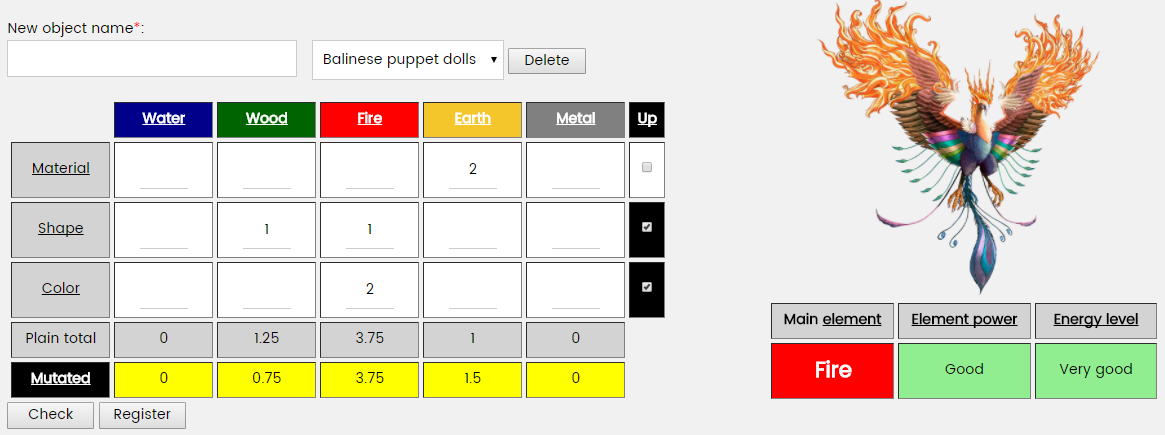
2. Understand the polarity analysis: at the bottom of the table, you can see two calculated lines:
- Plain total: it simply sums up the energy level for each column/element.
- Mutated: depending on the energy level on each element, interaction between elements will or will not happen, resulting in a
"mutated" energy level. Mutation can happen either through the "Creative"
or the "Controlling" cycle or both.
The result of those interactions is displayed on the final "Mutated" line, and is used to determine the actual polarity of the object.
The right side of the block will then display the polarity analysis, corresponding to the energy levels of the "Mutated" line in the table.
The "main element" is simply the element with the most energy. If two elements have the same maximum energy for a given object, then the system
will display "All mixed up" as the main element. In this case, the polarity is not clear enough to be defined for this object, it usually means that
the object has good energy balance between elements, but then it cannot really be used to modify the polarity of any area in your home.
The system displays also the 2 additional parameters:
- the "element power": it is an indication of the power of the main element compared to the other elements. For example, if the energy level
of the Water element is more or equal to 4 (out of 6), then we consider that the element power is "strong", and this object can be
successfully used to increase the Water polarity of the area in which you decide to position it.
- the "energy level": it shows the overall energy level of the object, following internal mutation. If elements are conflicting within an object,
then the controlling cycle will reduce the overall energy level. For example, if the total mutated energy of an object is less than 4.5 (out of 6),
then we consider that the overall energy level is "weak".
3. Check a group of objects: at the bottom of the page, you can also decide to combine several objects together, and determine the polarity of the association.
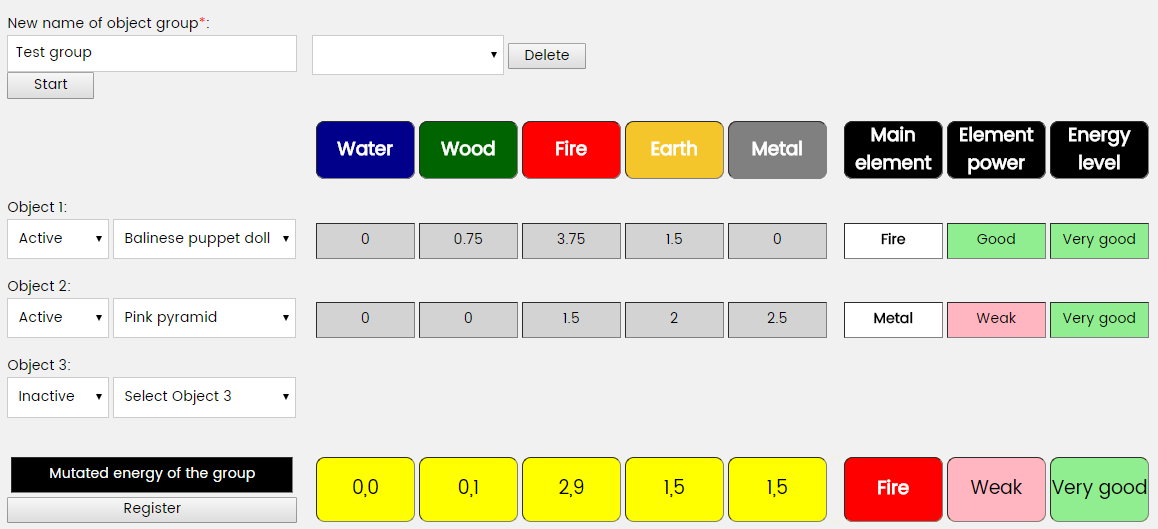
On the left side, you can type a name for the given group of objects, and click on the "start" button. The system will display the first two lines
corresponding to Object 1 and Object 2. In the "Select Object" drop-down list, you can select any of the objects you have already registered.
By default, all the objects are considered "inactive", so you have to manually activate them if you want them to change the energy of the group. Inactivating
an object is similar to removing it from the group, but sometimes it is interesting to keep it registered inside the group if you plan to (re)activate it later.
Every time you select a different object on a given line, the "mutated" energy levels of each selected object will be displayed.
You can include up to 5 different objects in a group. At the bottom, the mutated energy of the whole group is displayed, and on the right side you will see
the corresponding "main element", "element power" and "energy level" of the group.
Once you have completed the association/group, you can push the "Register" button at the bottom to formally register the group in the system.
In the middle, you can also select any existing group and it will display its parameters
in the table and its polarity analysis on the right side. Pushing the "Delete" button will erase the group from the system.
Please remember again that only the "activated" objects will take part in the calculation and update the mutated energy of the group.
As always, if you encounter any technical problem or if you have any question, please don't hesitate to send an email to: Your Fengshui Partner.
Ba gua
The ba gua (ba = eight; gua = area) is the Fengshui map of the energetic influences in
your space. It is a useful tool for evaluating the areas (lucky/unlucky, focus/no focus) in your residence.
The ba gua is traditionally shown as an octagon with eight sections surrounding a
central area: the tai chi. In the contemoporary styles of Fengshui, we extend the
corners of the ba gua to form a square, then divide it into nine equal sections:

The ba gua divides any space into these nine areas. There is a ba gua for your plot
of land, a ba gua for your house or apartment, and a ba gua for each room within
your home. There’s even a ba gua for your desk.
There are two methods to determine the Bagua of any residence:
- the Doorway or "8 mansions" method
- the Compass method
Doorway Bagua: if you follow Western Fengshui,
the 3 x 3 (rectangular) grid is static with each of its sectors representing an 'aspiration' as well as colours,
numbers, seasons and the five elements. Beginning from the North the aspirations are: Career, Knowledge/Education,
Longevity/Family/Community, Wealth, Fame/Recognition, Love/Relationships, Descendants/Creativity and Mentor/Travel.
This Grid is always placed in the same position over a floor plan, with the middle sector at the bottom
(career) in line with the front of your property. No reference is made to compass directions or locations so each sector
in a property is treated the same regardless of its direction and the location of each of the individual rooms within that property.
For example the 'Wealth' direction is always diagonally left of the front of the property. This could relate to your living room,
kitchen, bedroom or bathroom. This style of Fengshui is more static than its traditional counterpart in that regardless of the
direction your property faces the internal sectors will all have the same attributes, with the front relating to career and so on.
This form of Western Fengshui makes no provision for the influence of the external environment.
Compass Bagua: unlike for the Doorway method, The Compass Bagua (octogonal) grid is placed over a floor plan
based on the compass direction of your property. This method is more classical, and teaches that the external macro environment
will identify the presence and quality of Qi likely to enter your property.
in our tool we combine the two methods to leverage the insights from both techniques, which then increases the accuracy of the improvement tips.
As always, if you have any question, please don't hesitate to send an email to: Your Fengshui Partner.
Doorway Bagua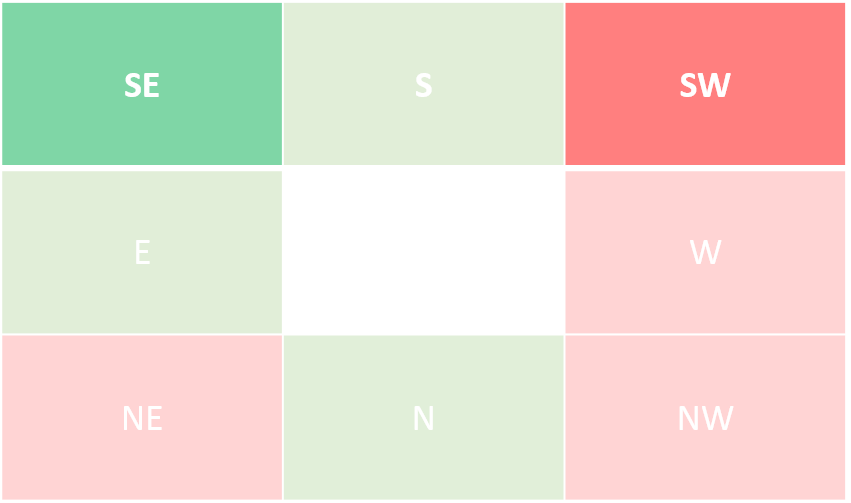
Contemporary western Fengshui arranges the ba gua based on the main entry to a
space (whether an entire building or an individual room) rather than by the compass
directions. Follow these steps to determine the ba gua of your home based on the doorway.
1. If your house has more than one level, start with the ba gua for the main floor.
Turn your floor plan so the front door is at the bottom of the page, and the back of the house is at the top of the page.
Even if you usually enter your home through the garage or a back or side door, always align the ba gua to the
formal main entry. “Main entry” here is determined by architectural prominence, not by which door you and your family use most often.
2. Draw a line across the page at the door. Some parts of your house (often the garage) may
stick out in front of the door. That’s okay. For now, just mark the door line:
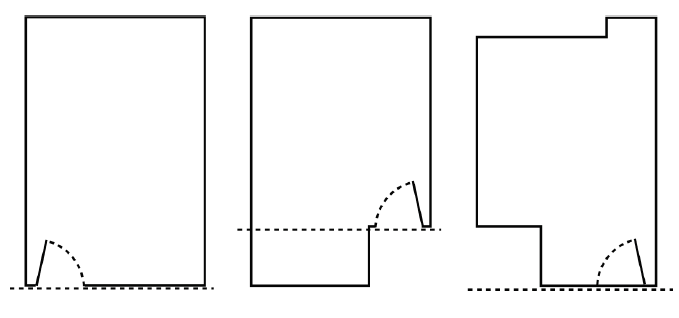
3. Draw a nine-unit grid covering the length and width of the area of the house that is behind the front door:
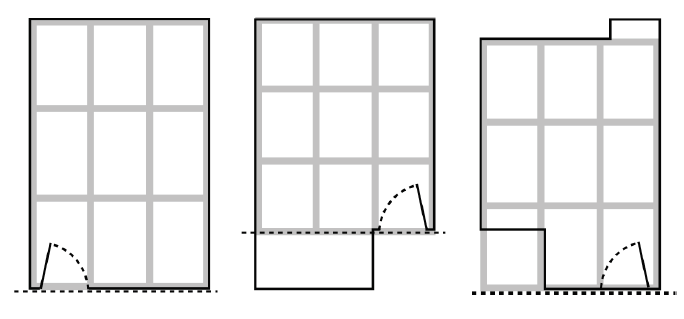
4. Extensions and Missing areas:
An extension is a part of the home that sticks out from the basic shape of the
structure. It increases the energy of the gua(s) it extends beyond, and is considered a good thing:
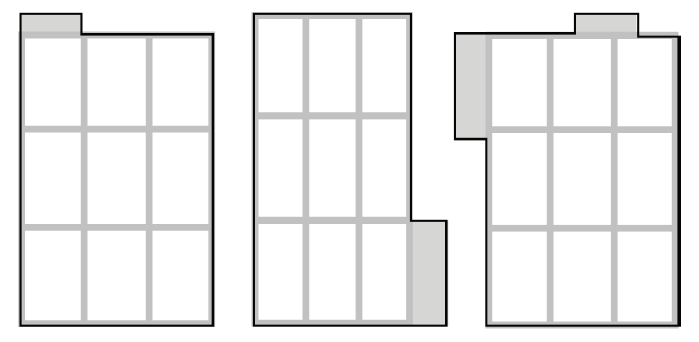
A missing area is like a bite taken out of the basic shape of the house. It weakens
the energy of the affected gua(s), and is considered a drawback.
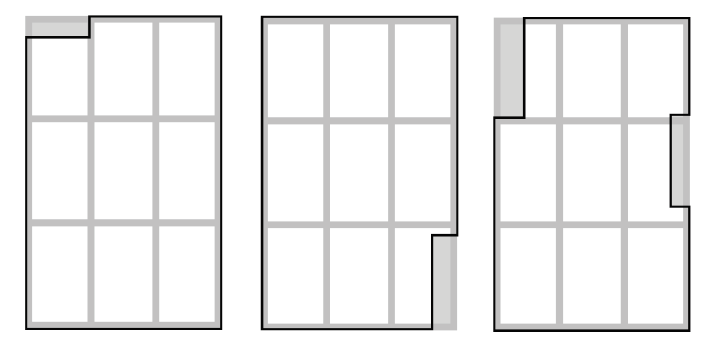
At the front of the house, the edge of the ba gua is always determined by the
location of the doorway. Any part of the house that is in front of that line is an extension.
Where the ba gua covers an area outside the walls of the house those parts of the bagua are “missing.” On the sides or
at the back of the house, measure the total length of that side of
the house; the longest section of wall defines the boundary of the house ba gua.
In order to qualify as an extension, any part that sticks out must be less than half
the total length of that side of the house (diagram A, below). If it’s more than
half the total length it is covered by the ba gua, and what you’ve got is a missing area beside it (diagram B):
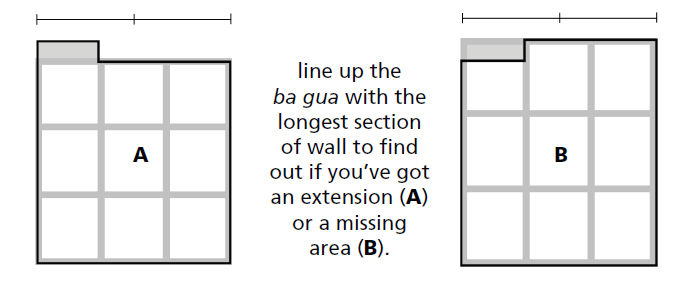
Similarly, a “bite” from the side or back of the house must be less than half the
total length of that side of the house (B). Otherwise the ba gua does not cover the
“bite” (A) and what you’ve got is an extention.
The following odd shape is the outline of an apartment that was found at a realtor’s website.
It has two large extensions (a) and (b) and a smaller missing area (c) on the balcony.
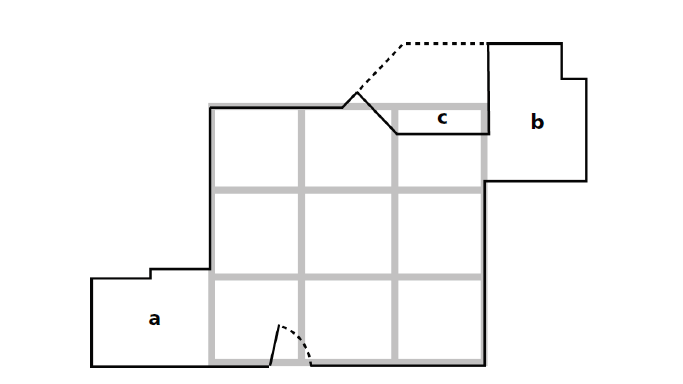
As always, if you have any question, please don't hesitate to send an email to: Your Fengshui Partner.
Compass Bagua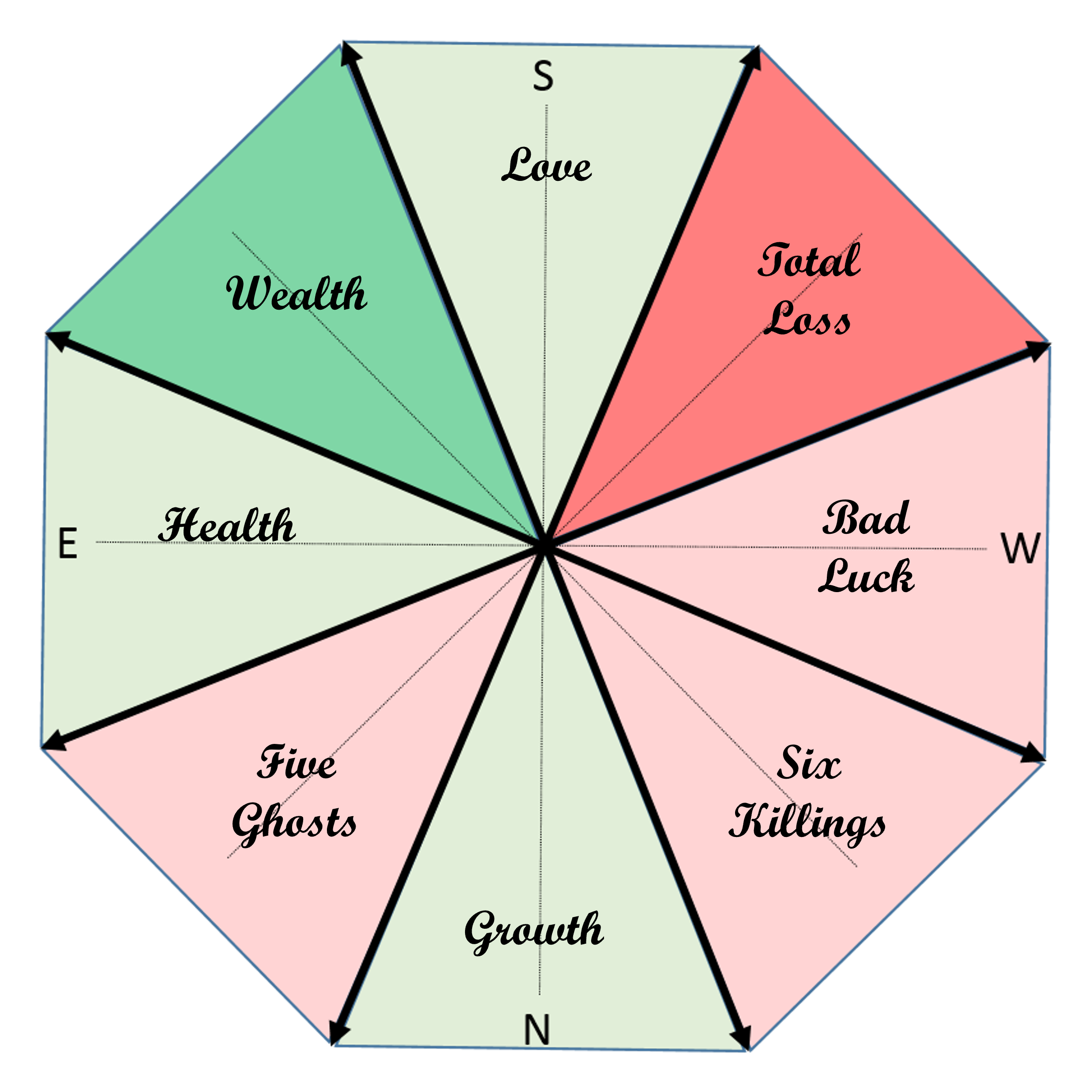
If you read a variety of Fengshui books, you will encounter versions of the ba gua
labeled according to the compass directions, with north at kan (career), and south at li (fame). In the Chinese system, north is
shown at the bottom of the page and south at the top, which is the opposite of how most people in the West are accustomed to seeing maps.
This makes sense when you understand that cold, still energy, settles; warm,
active energy, rises. North, at the bottom of the ba gua, is associated with winter,
darkness, stillness, cold, and midnight. East, at the left side of the ba gua, is associated
with spring, increasing light, warmth, growth, and morning. South, at the top,
is associated with summer, brightness, movement, heat, and midday. West, on the right, is associated with autumn,
lessening light, cooling, decay, and twilight. These compass directions make the ba gua a symbol of the daily
and seasonal cycles of nature:
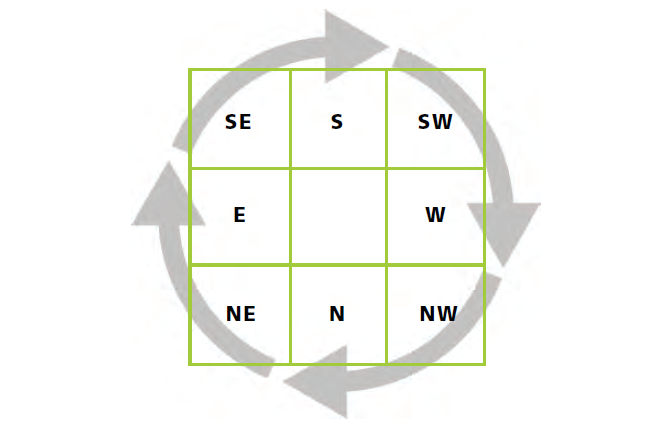
This alternative view of the compass looks upside-down. If you’re not used to
thinking of north as being at the bottom of a map. You may find it easier to refer to this list instead:
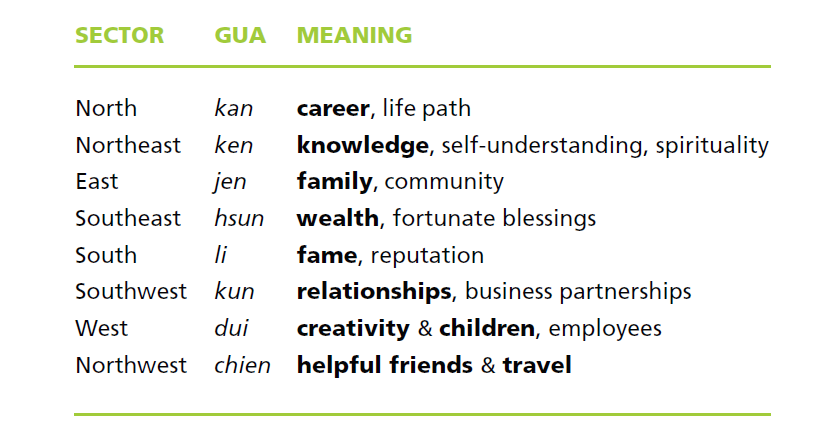
When the ba gua is defined by the compass directions, kan gua—the Career area—is
assigned to the north sector of your home, regardless of whether that sector is in
the front or the back, or left or right side of the house. Li gua (Fame) is the south
sector of the house, and so on. Some people use the nine-unit grid for the compass ba gua (with no direction
assigned to the center). I mention this because you may see the ba gua shown this
way in other Fengshui books or in magazine articles. Using the grid for the compass
directions is often just a “guesstimate", and that can be a problem.
The house in the diagram below faces roughly SW, so the directions are assigned
to the ba gua grid with SW at the front of the house (lower edge of the diagram), where the front door is:
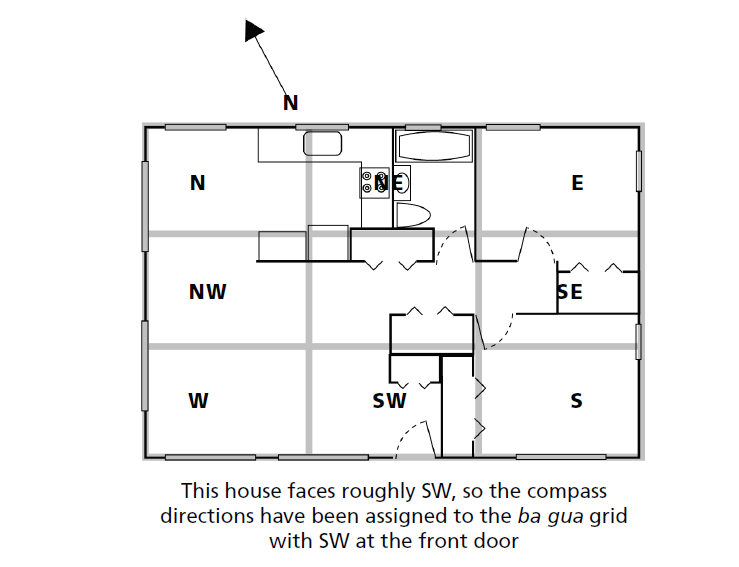
The problem with this method is that most buildings—like this one—are not
exactly lined up to one of the eight directions, so the grid method does not always
depict the compass accurately. It is more appropriate to divide a space into eight
45 degrees sectors if you want to use the compass to define the ba gua.
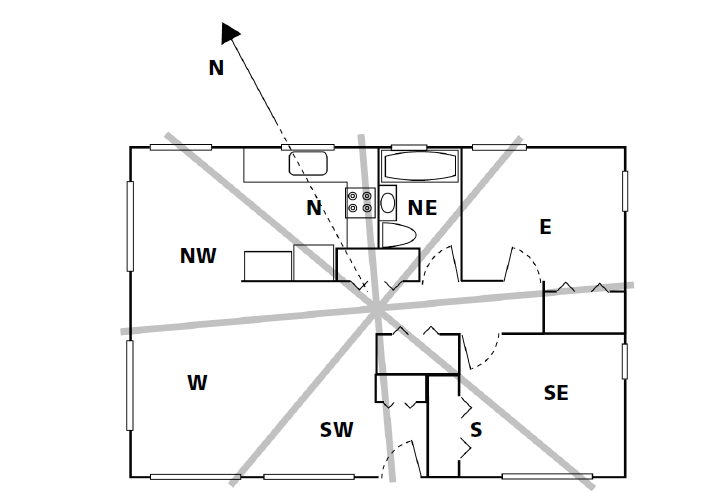
Compare the diagram above to the diagram on the previous page. You can see
that the rooms at the top left and bottom right of the floor plan are mostly in the
NW and SE sectors of the home, not N and S as shown by the grid method.
This could be a critical difference if you wish to use your personal “lucky” directions
to help choose a location for your home office (as you will learn to do a
little later on in this chapter). For that reason, this tool will always consider the eight-sector
method—rather than the grid—when looking at the compass directions for Fengshui purposes.
As always, if you have any question, please don't hesitate to send an email to: Your Fengshui Partner.
Flying Star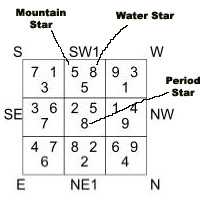
Flying Star Fengshui is the branch of compass formula Fengshui that deals with the changing Chi of time.
It introduces the concept of natal charts for houses and buildings. These charts are like a map of luck or affliction sectors in any building, and unlike the Bagua methods
which are independent of time, they offer another basis for analyzing and diagnosing the Fengshui of buildings and homes, but which will vary from one cycle of time to the next.
Each cycle of time lasts twenty years. We are now in Period 8, which began on February 4th 2004 and will end on February 4th 2024.
Flying Star Fengshui introduces the predictive element into Fengshui, as it is concerned with fortunes of places and spaces over time.
Flying Star charts are drawn up based on the facing direction of buildings (including houses) as well as on the age of the building (the date of original
inauguration/construction, or the last renovation date, or even the moving date if that triggered some serious renovation).
Look at the combination of numbers inside each grid. The big numbers in the center are the Period numbers. The little numbers on the left
and right of the big central numbers are the Mountain Stars (on the left) and the Water Stars (on the right). The numbers indicate relationship and wealth luck, respectively.
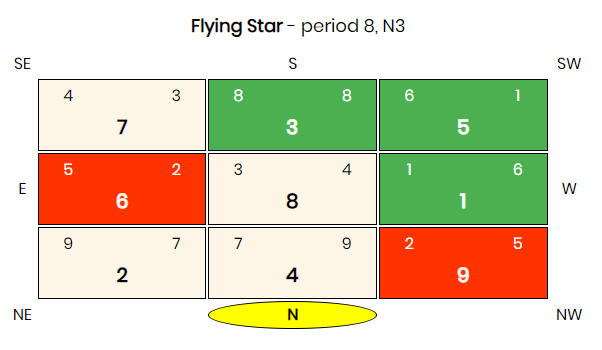
You can also incorporate month and year numbers into your chart to expand the Fengshui investigation, thereby offering clues on how to improve
your interiors from year to year and from month to month. We at least strongly suggest to identify the locations of the 3 yearly afflictions, the 'Grand Duke Jupiter' (star 2 in period 8),
the 'Five Yellow' (star 5 in period 8) and the '3 Killings' (star 3 in Period 8), as their negative influence is always significant in their related sector or direction.
See for example below the Flying Star chart for 2020, showing the GDJ in the south, the 5Y in the east and the 3K in the north:
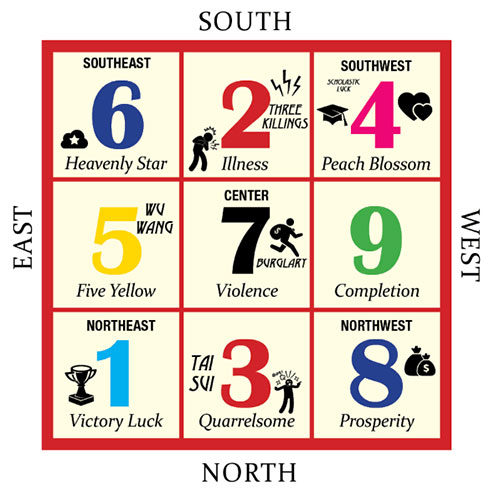
As always, if you have any question, please don't hesitate to send an email to: Your Fengshui Partner.
The 5 Fengshui elements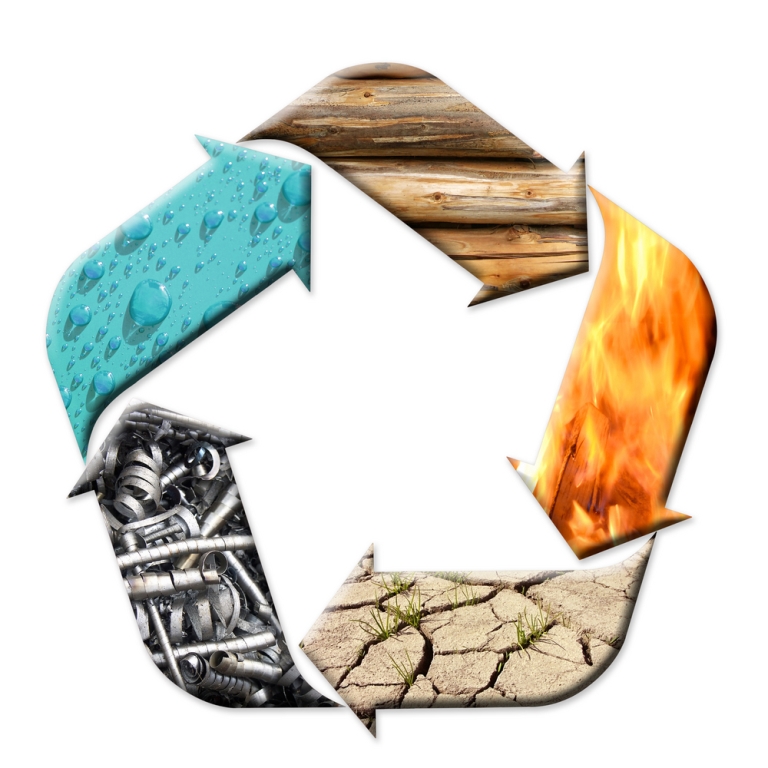
Going back many thousands of years (some go as far as 5,000 years or more), the wise
and beautiful Fengshui masters of ancient times were exploring the unseen, mystical dimensions of the Universal energy called Chi.
Their goal was to map the influence of this energy on humans’ well-being. Delving into the very depths of cosmic knowledge,
these ancient Fengshui masters were studying the intricately connected patterns between the Universal and the personal expressions of energy.
No stone was left unturned by these brave warriors of Spirit – they studied with absolute dedication the expressions of this Universal energy
in various land formations, in the flow of water, geometry of man-made structures and so much more. What they came to clearly understand
(and define as a foundation for good Fengshui) is that in order for an indoor environment to replicate the potency of Chi, or Universal
energy, and promote the health and vitality of people, several specific elements must be present.
These vital elements were defined as Wood, Fire, Earth, Metal and Water.
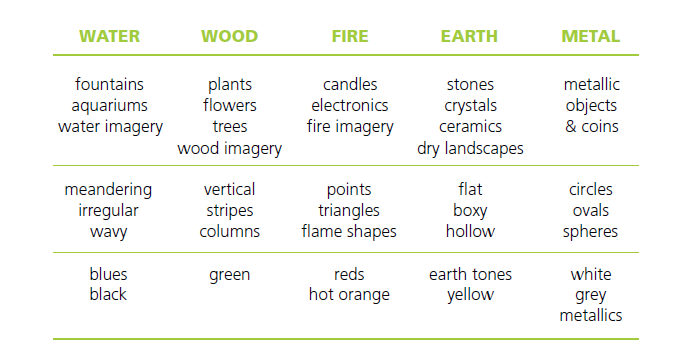
Each one of these elements has a unique quality of energy that is expressed in specific colors, sounds,
body organs, compass directions, planets, flavors, etc. So, we can sum up the theory of 5 Fengshui elements by stating that there are
5 universal forces, or archetypal nature energies, that are expressed as 5 Fengshui elements. They can be viewed as building blocks,
or Fengshui tools that help one create potent, vibrant and alive energy in any space. An auspicious quality of energy full of vital force
to sustain the health, wealth and happiness of people living in that space.
As always, if you have any question, please don't hesitate to send an email to: Your Fengshui Partner.
The Creative Cycle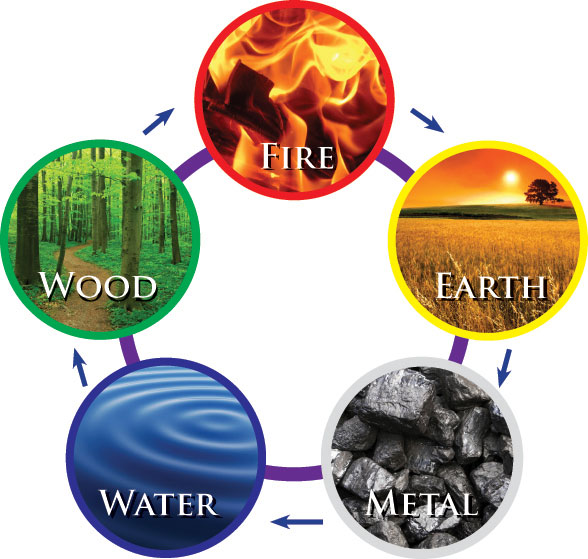
Our five Fengshui elements friends have a complex way of interacting with each other, and understanding the
dynamic of their social life :) gives us an all-powerful key to bring good Fengshui into any space, be it home, office or garden. Even though
there are quite a few variations in the interaction of 5 Fengshui elements, they can be all summed up in two basic and fundamental ways of
relating that is happening between the five Fengshui elements. These ways of relating are called “cycles” in Fengshui, and we do have to
know them!
The first cycle of elements is called the Productive Cycle, or the cycle of Creation. This is a way of communicating where each element
is supporting the other, being in turn supported by another element, too. Here above is a graphic that illustrates this "Nirvana". It helps to
think of elements in very practical terms such as their expression in nature or even in various household items. For example, if you want
to make fire, you need wood. If you want your plants to be lush and healthy, you give them water, etc.
So the productive cycle of the five Fengshui elements resembles quite a harmonious, happy community! Everybody finds a way to
love and support everybody else. Peace, man. Understanding this cycle will help you strengthen the elements you might need in your
space in a subtle, but very powerful way.
As always, if you have any question, please don't hesitate to send an email to: Your Fengshui Partner.
The Controlling Cycle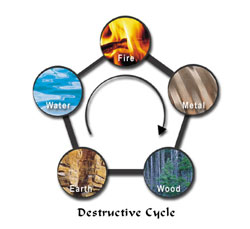
The Destructive or Controlling Cycle is the way of relating between the Fengshui elements where each element
is destroying the other (or making it really, really weak). No more peace, real destruction happening here! Jokes aside, this is an equally
important cycle to understand when you deal with a space that has a stubborn presence of a Fengshui element that is detrimental to someone’s
well-being. There can be no creation without destruction, so here is how the intelligent rage of the Destructive
Cycle of Fengshui elements expresses itself, together with the Creative cycle:
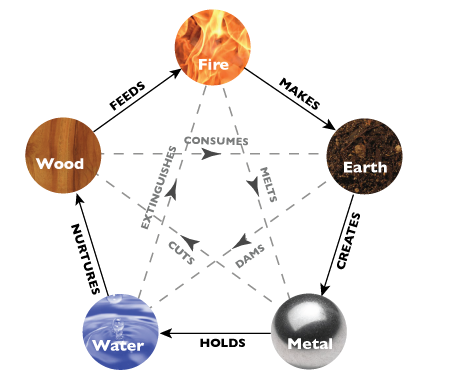
As always, if you have any question, please don't hesitate to send an email to: Your Fengshui Partner.
The Wood element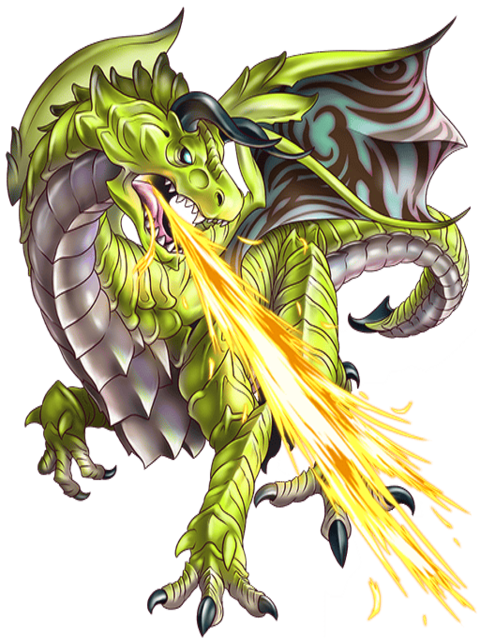
The Wood element has the energy of a healthy, growing tree.
Vital and strong, Wood helps you move your life upward while anchoring you to your roots, the source of your strength.
Its shape is tall and vertical: columns, vertical stripes and other strong verticals all represent Wood. Its color is green or greenish blue.
The Wood element is present in live (and high-quality silk) plants. But it is "less" present in furniture or objects made of Wood because it is
not alive, it has become inert. Wood has qualities of flexibility and strength, and adds healthy vitality to your life.
It is the element of springtime growth and represents a gentle breeze that gathers abundance to it. The archetype of the Wood element
is the Pioneer, breaking through barriers as it moves upwards.
On the Feng Shui Bagua Map, Wood is the element of New Beginnings & Family (East),
and of Wealth & Gratitude (South East). The Wood element is present in all things botanical: live (and high-quality silk) plants,
botanical prints, artwork that includes trees…. Look around your space and start to notice which objects, furniture, and pieces of art
may represent the Wood element.
Now, let’s look at Wood in the Cycle of the Elements:
- Wood is nourished by Water in the Creative Cycle
- Wood in turn nourishes the Fire element
- Wood is controlled by Metal in the Controlling Cycle, just as an axe cuts down a tree in the forest to control its growth
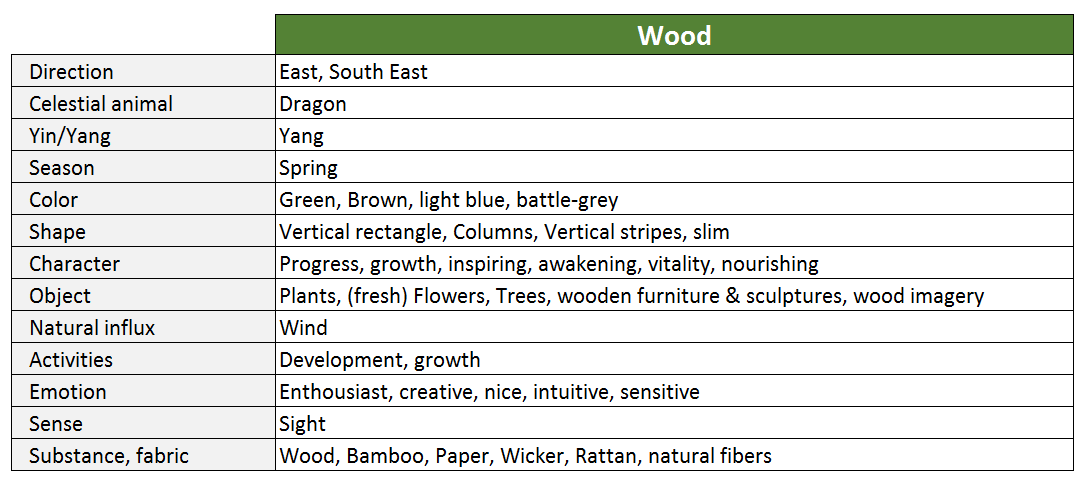
As always, if you have any question, please don't hesitate to send an email to: Your Fengshui Partner.
The Fire element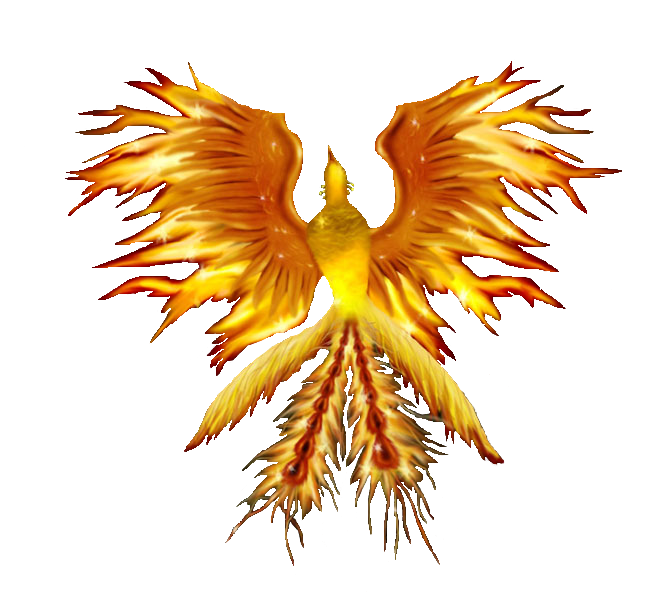
Fire feels magical and transformative, creating a warm atmosphere for a life that’s dynamic, expansive and
happily social. Fire’s symbolic shape is the triangle, evoking the shape of a merry fire burning in a cozy fireplace. So pointed shapes
such as stars do a great job bringing Fire into your space. Good lighting is another important way to evoke the vitality of Fire. Its color
is red: a wise use of red accessories create instant warmth and life to your space. Another great way to bring Fire into your environment
is with the evocation of living things: leather, animal prints, art featuring animals or people and even your pet dog or cat all represent
the warm, social nature of Fire.
The Fire element is closely related to your emotional health: Fire is passionate and enthusiastic, and
loves to be nurtured with a good laugh every day. It is the element of the fullness of mid-summer and high noon. Be careful to modulate
your use of Fire: don’t get burned! The archetype of the Fire element is the Wizard. The magical, magnetic qualities of Fire have always
inspired a faith that dreams can come true and desires fulfilled.
On the Feng Shui Bagua Map, Fire is the element of your Fame & Reputation (South). The bright and lively Fire element is key to your social
life, the way you are seen in the world, and your ability to connect meaningfully with the important people in your life. Look around and
start to notice which objects, furniture, and pieces of art may represent Fire in your space.
Now, let’s look at Fire in the Cycle of the Elements:
- Fire is nourished by Wood in the Creative Cycle
- Fire in turn nourishes the Earth element, as the ash from a fire transforms itself into the earth under your feet
- Fire is controlled by Water in the Controlling Cycle, just as a dose of water calms or extinguishes a fire in everyday life

As always, if you have any question, please don't hesitate to send an email to: Your Fengshui Partner.
The Earth element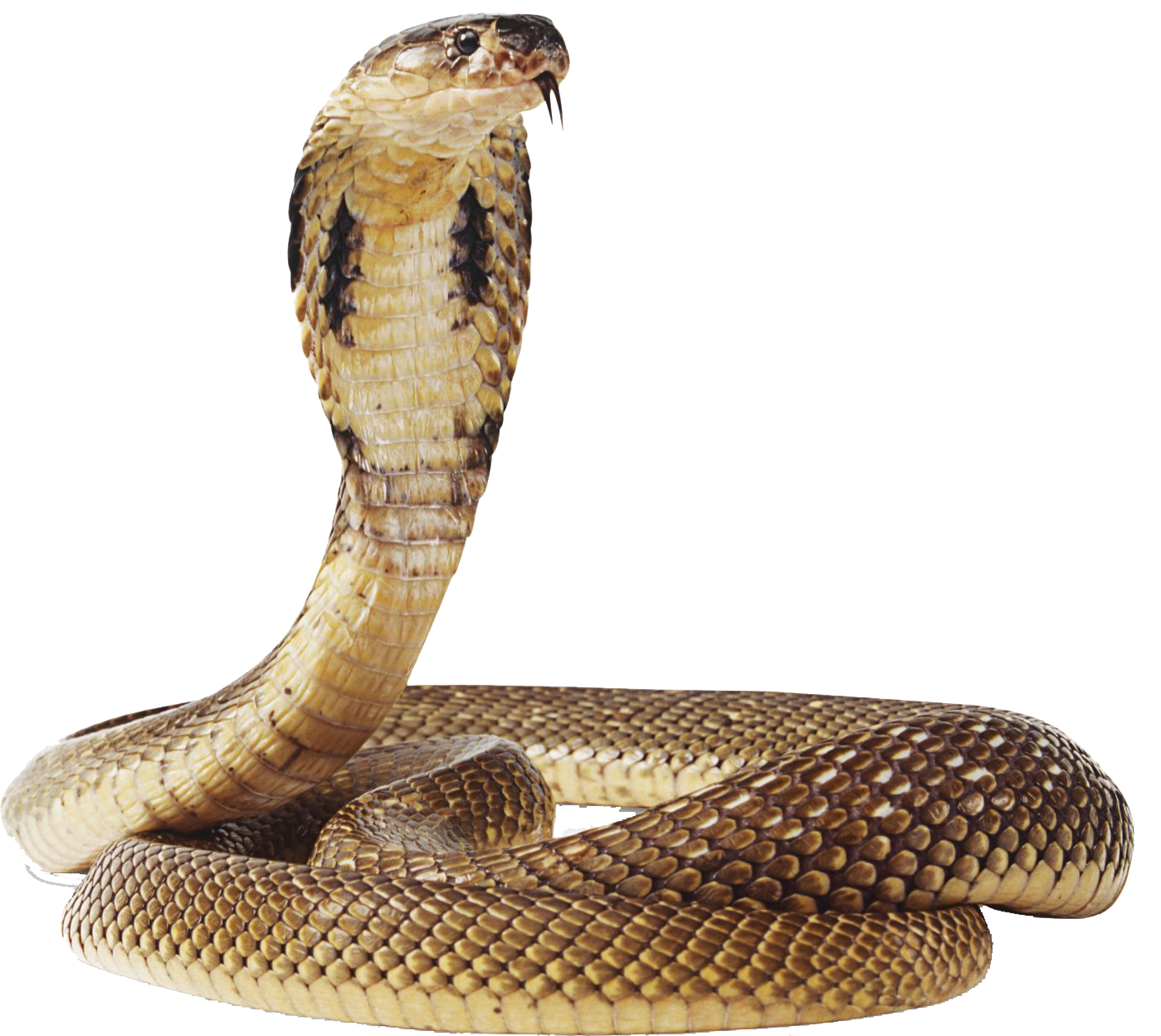
The Earth element creates a “home base” in your life. Its unique mothering quality makes you feel balanced
and secure, giving you an inner place that supports your efforts to care for yourself while caring for those around you, too. Earth’s symbolic
shape is a square, the most stable and grounded of shapes. Anything square or rectangular evokes the Earth element in your space. Flat surfaces
and horizontal lines also symbolize the endless visual expanses of Earth. Its color is yellow, along with other earth tones such as light
brown and sandy colors. Earth-y materials like ceramics, pottery and brick create a tactile sense of Earth’s comforts in your home.
The Earth element is very much a tangible, visible, physical element: your physical health and that the
physical state of your home are both associated with Earth. Clutter and weight-gain can be addressed by bringing the Earth element into balance.
Earth represents the “in-between” seasons like late fall’s Indian Summer and “mud season” in early spring. Earth helps you create boundaries,
just as earthworks like a dam or the banks of a stream control and steer the flow of water. The archetype of the Earth element is the Peacemaker.
Earth is the “go-between” of the Five Elements; if this is your “type” you may find that you sometimes have a hard time saying No.
Clear boundaries help Earth stay in balance and do the most good in the world.
On the Feng Shui Bagua Map, Earth is represented in three different areas: Relationship (South West),
Knowledge & Self-Cultivation (North East), and Health (in the Center). Now you can look around and start to notice which objects,
furniture, and pieces of art may represent Earth in your space.
Now, let’s look at Earth in the Cycle of the Elements:
- Earth is nourished by Fire in the Creative Cycle
- Earth in turn nourishes the Metal element, as it condenses and solidifies into gems and precious metals
- Earth is controlled by Wood in the Controlling Cycle, just as the roots of a tree break up the earth as they grow and expand

As always, if you have any question, please don't hesitate to send an email to: Your Fengshui Partner.
The Metal element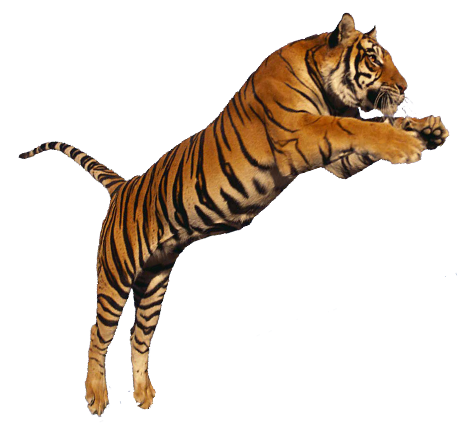
Metal has a sense of refinement, logic and decisiveness that make it easier to cut through life’s complications.
As the condensing, “organizing element,” it helps you set up and successfully execute your plans and important projects. Metal’s focussed,
structured qualities make it the element that helps you most to suceed in business, so be sure to include it in your office or workspace.
Metal’s symbolic shape is the circle, the purest shape whose line never ends. The circle carries with it qualities of Heaven, especially
the all-powerful Sun, which is considered the Father of the world in Feng Shui. In China circles and squares are frequently used together
to symbolize the Yin/Yang relationship of the Mother (the square Earth Yin element) and the Father (the Heavenly, Metal Yang element).
This iconic symboism is used in everything from architecture to the design of metal coins; Beijing’s Forbidden City — and the 2008
Olympic arenas — provide just two prominent examples of how bringing them together creates a sense of harmony in the environment.
Here’s some more about the Feng Shui qualities of Metal: Anything circular, oval or that has rounded edges
brings the Metal element into your space. Metal’s color ranges from pure white to light greys and soft pastels. Metal and metallic objects
have a gleaming and shiny quality, rather than reflective (which characterizes the Water element). Gemstones, shiny metal, and subtle
reflective surfaces all bring Metal into your space. As opposed to the physicality of the Earth element, the Chi of Metal creates a more
intangible, invisible energetic charge in your environment. It helps you create structure and boundaries in your life, and stay “above the
fray” when things around you seem to be getting out of control. Metal represents autumn in the cycle of the seasons: think of the crisp,
cool air of fall when you want to conjure a sense of what Metal is all about. The archetype of the Metal element is the Alchemist, who has
the power to create great things from small materials. The Metal element symbolizes the Children/Productivity and Travel/Helpful People
sectors of the Bagua Map.
On the Feng Shui Bagua Map, Metal is represented in two sectors: Children & Productivity (West)
and Travel & Helpful People (North West). Look around and start to notice which objects, furniture, and pieces of art may represent
Metal in your space.
Now, let’s look at Metal in the Cycle of the Elements:
- Metal is nourished by Earth in the Creative Cycle
- Metal in turn nourishes the Water element, as it liquifies and takes on more more sinuous shapes
- Metal is controlled by Fire in the Controlling Cycle, just as the high heat melts any metallic object
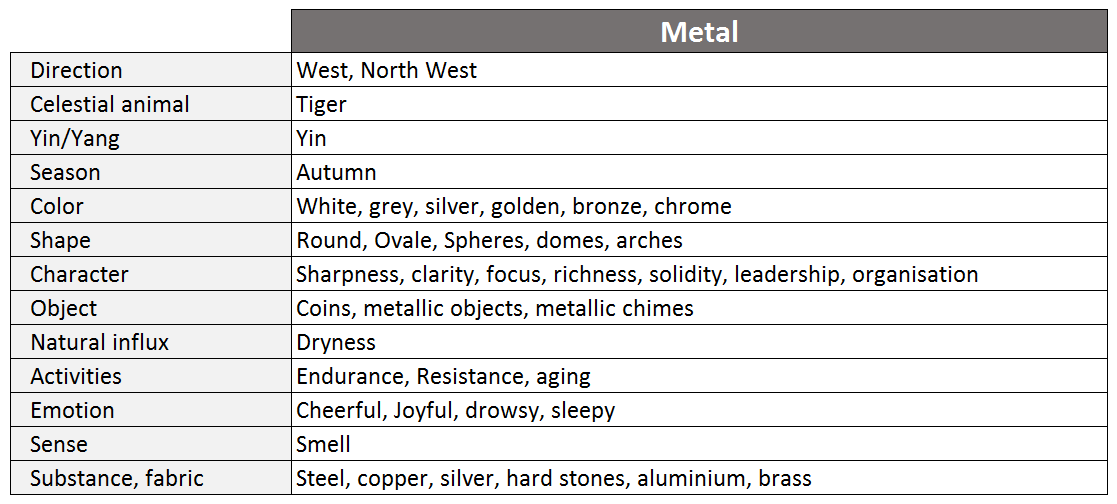
As always, if you have any question, please don't hesitate to send an email to: Your Fengshui Partner.
The Water element
Water is unstructured. It flows and meanders wherever it wishes to go. Water’s movement, or lack thereof,
closely replicates the flow of Chi energy in your life. The way you arrange your space speeds up, slows down or can even stop the flow of
your vital life energy, so wise use of the Water element is essential to creating auspicious Feng Shui. Water gives you a place to regenerate
yourself, a spiritual and physical wellspring of refreshing nourishment. But because its inky depths are dark, cold and deep, Water is also
considered the element of mystery and courage. Despite its nourishing qualities, in ancient China the presence of Water felt dangerous:
it froze in winter, its depths were unknowable, it created an almost impossible-to-traverse boundary for the country. So Water came to be
known as the element of “the Abyss,” an element that it took courage to traverse in any season. Water can be moving or it can be still;
this means that there are many different ways to represent Water in your space. Water’s symbolic shape is a sinuous, flowing line that
evokes its smooth yet unpredictable path. To symbolize its reflective qualities, Water also shows up in highly polished surfaces like
mirrors and clear glass.
Here’s some more about the Feng Shui qualities of Water: any shape that’s wavy, flowing or sinuous brings
the Water element into your space. Water’s color is black or other very, very dark colors. Water-y objects create pure reflection: mirrors,
glass and crystal all evoke the Water element in your home or office. Water itself, of course, also brings this essential element into
your space. A water fountain near the entry to your space improves the flow of Chi energy — and healthy finances — into your life.
Water represents winter in the cycle of the seasons: the darkest season in the northern hemisphere. The archetype of the Water element is
the Philosopher, whose calm, gentle nature helps to explain the mysteries of the world.
On the Feng Shui Bagua Map, Water represents the Career/Life Journey sector at the bottom-center of the map (North).
Look around and start to notice which objects, furniture, and pieces of art may represent Water in your space.
Now, let’s look at Water in the Cycle of the Elements:
- Water is nourished by Metal in the Creative Cycle
- Water in turn nourishes the Wood element
- Water is controlled by Earth in the Controlling Cycle; Earth controls Water both by creating boundaries or dams to control its flow,
and by muddying it to slow it down and reduce its power.

As always, if you have any question, please don't hesitate to send an email to: Your Fengshui Partner.
Fengshui element & colors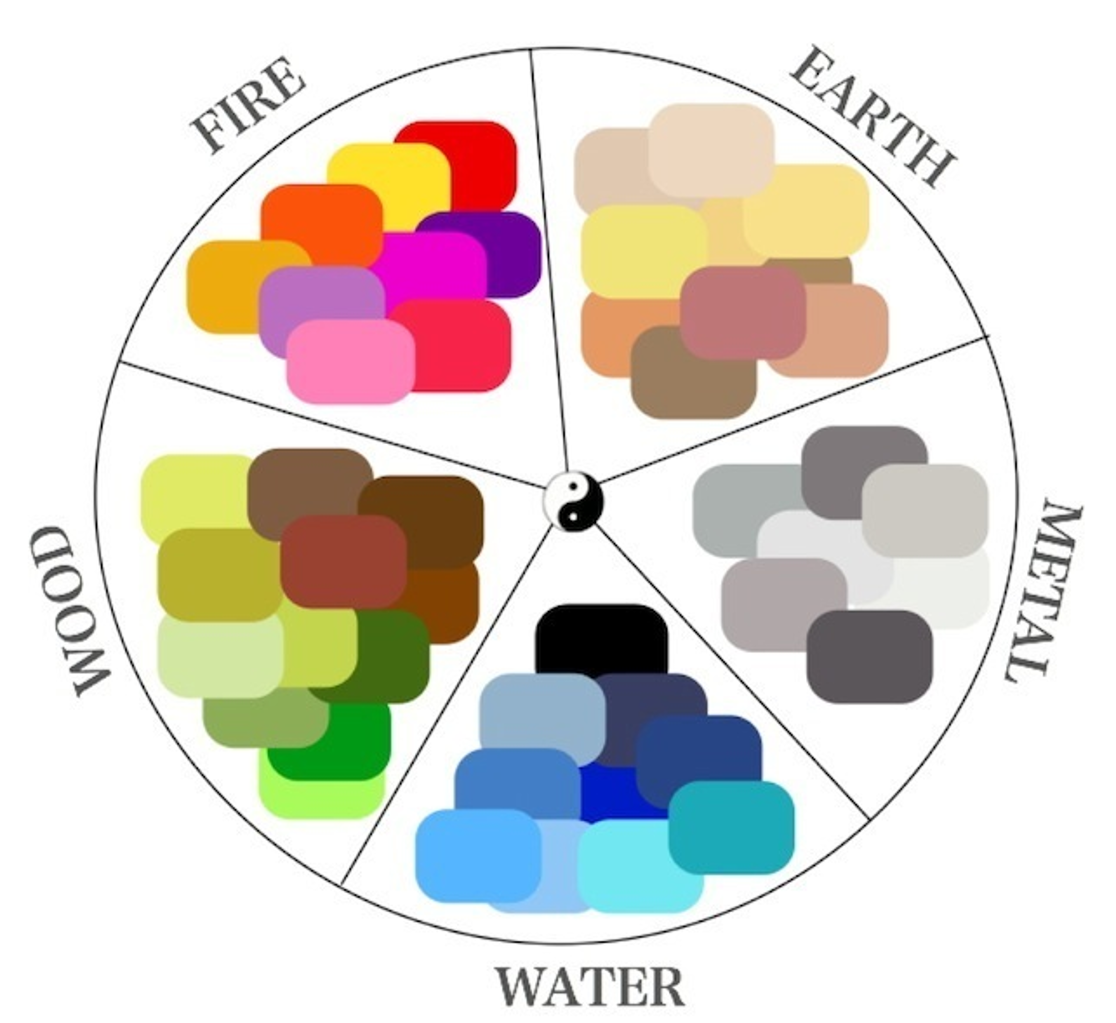
The easiest way to get your life moving by using feng shui is to bring the energy of specific feng shui
colors in order to achieve the desired results. Color is very powerful, as it is an expression of light, and many, way too many homes and
offices are starved for light. So, bring on vibrant light energy with beautiful feng shui colors! One of the basic principles of feng shui
is the principle of five elements, which are Wood, Fire, Earth, Metal and Water. These feng shui elements interact between themselves in
certain ways, generally defined as the Productive and Destructive cycles.
Each feng shui element is represented by a specific color, and color is the easiest way to use the five
elements principle to bring more harmony into your home with feng shui.

As always, if you have any question, please don't hesitate to send an email to: Your Fengshui Partner.
Fengshui element & shapes
Along with using color as an expression of the five feng shui elements, you can also bring the presence
of each element with specific shapes.

As always, if you have any question, please don't hesitate to send an email to: Your Fengshui Partner.
Fengshui element & materials
Along with using color and shape as an expression of the five feng shui elements, you can also bring the presence
of each element with specific materials or fabrics.

As always, if you have any question, please don't hesitate to send an email to: Your Fengshui Partner.
 Your utlimate
Your utlimate




























































